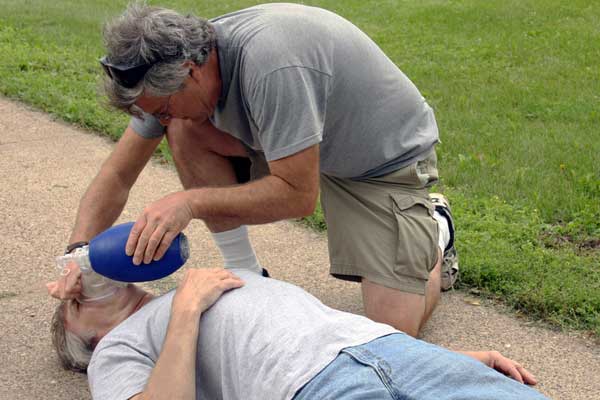Chest Compressions Now Come First in CPR

Chest compressions should now come first when performing cardiopulmonary resuscitation (CPR), according to new American Heart Association guidelines released today.
Compressions should be followed by tilting the victim's head back, which opens the airway, then breathing into the victim's mouth, according to the new guidelines, which apply to any adult, child or infant who isn't breathing normally and is unresponsive.
Previously, the guidelines recommended CPR be given in the order of the "ABCs" the airway should be opened first, then the rescuer should breathe into the victim's mouth, then chest compressions should begin.
But research from the American Heart Association found that most people didn't know what to do in the event of cardiac arrest, heart attack, drowning or choking, said Dr. Michael Sayre, co-author of the guidelines and chairman of the American Heart Association's Emergency Cardiovascular Care Committee.
"By emphasizing the importance of chest compressions and starting the chest compressions, which is the most important part of CPR, I'm confident we'll get rescuers to act more often," Sayre told MyHealthNewsDaily.
A review of the guidelines was conducted this year to incorporate recent research examining effectiveness and bystander intervention. The last review was conducted in 2005, Sayre said.
The new American Heart Association CPR guidelines were published today (Oct. 18) in Circulation: Journal of the American Heart Association.
Sign up for the Live Science daily newsletter now
Get the world’s most fascinating discoveries delivered straight to your inbox.
What was wrong with the old guidelines
The previous CPR guidelines which included looking, listening and feeling for breathing before starting chest compressions have been in use for 40 years. The guidelines are changing because too few people were acting when needed, Sayre said, not because the old methods are less effective than the new ones.
Rescuers who first open the airway and give breaths take 30 seconds longer to start chest compressions than those who begin compressions immediately, according to the American Heart Association. And compressions are vital for getting oxygenated blood in the lungs and blood vessels to the brain and heart quickly, especially during cardiac arrest, which is when the heart stops beating.
The principle is the same with "hands-only" CPR, Sayre said. That method has been encouraged since 2008, for people who want to help but have not been formally trained in CPR, and are unsure how to give the correct combination of breaths and chest compressions.
The American Heart Association will soon release new instructional materials for teaching the new method of CPR.
Other new recommendations include giving chest compressions faster than before (at least 100 times a minute), pushing at least 2 inches deep into the chest in adults and 1.5 inches in infants, avoiding leaning on the chest between compressions, doing continuous chest compressions without stopping and avoiding excessive mouth-to-mouth breathing.
The guidelines also recommend 9-1-1 centers to give chest-compression-first instructions over the phone to rescuers in the event of cardiac arrest.
New CPR training
The Red Cross is reviewing the new American Heart Association guidelines and will soon make a decision about what changes it will make to its CPR courses, according to a statement from the organization. The Red Cross is the largest provider of CPR training in the United States.
The Red Cross also supports hands-only CPR in emergency, non-health care settings, and will release details of an initiative to train 5 million people in hands-only CPR by 2011.
"If more people learned hands-only CPR, we could save more lives by putting more victims within a few steps of lifesaving assistance," the Red Cross said.
People who are CPR-certified don't necessarily have to go back and get re-certified in the new CPR procedure. But people who have completed a certification course recently are more likely to act if they encounter someone in cardiac arrest than someone who never had a course or took one many years ago, Sayre said.
"There is a benefit to taking a class in terms of confidence and helping that potential rescuer feel like they know what to do," he said.










